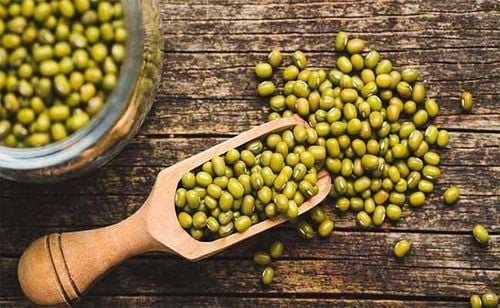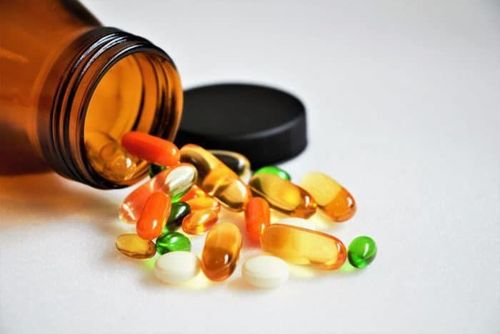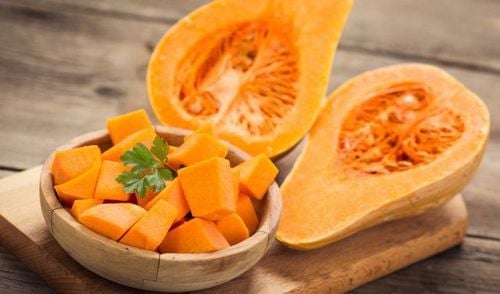This is an automatically translated article.
Vegetable squash is a popular vegetable in many regions of Vietnam. It is often used to make many different delicious dishes, such as boiled squash, stir-fried squash or shrimp soup,... However, few people know all of its uses and benefits. their health benefits.
1. Overview of the pumpkin plant
Pumpkin plant, also known as squash, pumpkin or wax squash. Pumpkin is a climbing plant, the scientific name is often called Cucurbita moschata Duchesne. It is the oldest known crop dating back 10,000 years in Central America and Mexico.
In Vietnam, pumpkin trees are also grown and used very widely in all regions of the country, including mountainous to midland plains. People often use vegetables or fruits of pumpkin to make attractive dishes. In general, most parts of the pumpkin plant are edible, such as the seeds, leaves, stems, flower buds, or fruit.
Nutritionists say that botanically, pumpkin is considered a fruit, however, when viewed from a nutritional perspective, they are more like a vegetable. Thanks to its high nutrient content and other amazing health benefits, squash has become one of the favorite foods of many people. Normally, squash will include the following parts: tops, young leaves and male squash flowers. Zucchini can be made into a variety of dishes, such as sauteed or boiled squash.
2. Nutritional composition of pumpkin
In about one cup of pumpkin will contain the following nutrients:
Calories: 63. Fat: 0 grams. Carbohydrates: 16 grams. Fiber: 2.8 grams. Sugar: 3 grams. Protein: 1.4 grams. Sodium: 6 milligrams. In addition, pumpkin also provides many other essential vitamins and minerals:
Vitamin A: more than 100% of your daily vitamin A needs. Vitamin C: almost 40% of your daily vitamin C needs. Potassium: about 18% of your daily potassium needs. Magnesium: about 15% of your daily needs. Calcium: about 5% of your daily calcium needs.

Bí đỏ cung cấp hơn 100% nhu cầu vitamin A hàng ngày của bạn.
3. Is eating squash good?
Currently, although squash has become a popular dish of many regions in Vietnam, many people still wonder if they have any health benefits. To be able to make a delicious dish from squash, it will take a lot of preliminary processing. However, squash is really a nutritious dish and has many great healing properties.
3.1. Improves immune system function
Pumpkin is an extremely rich source of iron, which helps increase the body's resistance to the immune system, and can protect the body from agents that cause infections and diseases. light. In addition, the amount of iron present in squash also contributes to the synthesis of hemoglobin, which helps carry oxygen throughout important tissues and organs in the body.
Furthermore, squash is also rich in folate, one of the essential minerals that helps stimulate the body's full production of red blood cells. This is especially helpful for people with anemia. Regular addition of squash to your daily diet will help increase the number of hemoglobin and red blood cells, thereby improving or disappearing your anemia.
3.2. Improve heart health
The reason, squash has the ability to improve the health of the cardiovascular system because pumpkin leaves contain a large amount of soluble fiber. This type of nutrient can reduce the absorption of bile acids from the small intestine and reduce bad cholesterol in the blood. On the other hand, when bacteria in the intestines destroy soluble fiber, some fatty acids are released and the liver stops working to produce cholesterol. Once the body controls the amount of bad cholesterol will help you significantly reduce the risk of heart problems.
In addition, pumpkin leaves also provide a large amount of potassium, a mineral that helps prevent arrhythmias, thereby reducing the risk of stroke.

Rau bí có khả năng cải thiện được sức khỏe hệ tim mạch.
3.3. Helps strengthen bones and teeth
Besides the ability to strengthen the immune system and heart function, eating squash regularly also contributes to stronger teeth and bones. Pumpkin is rich in phosphorus and calcium, both of which are important minerals for bone health. You should add more squash in your diet to prevent stiffness and joint pain.
On the other hand, calcium and phosphorus in squash also help form, support and protect tooth enamel as well as teeth in general, thereby effectively preventing tooth decay and other gum problems.
3.4. Helps prevent premature aging
Pumpkin also contains a large amount of copper, which is a powerful antioxidant that can protect cells in the body from the harmful effects of free radicals that lead to premature aging.
Ideally, you should eat squash every day to help the body repel the formation and appearance of free radicals that cause aging, thereby minimizing age spots, wrinkles and giving you a fresh, rosy, radiant and younger looking skin.
3.5. Helps to beautify and firm the skin
In fact, squash provides nearly 40 types of vitamin A, accounting for more than 5% of your daily essential nutrient value. Regular consumption of foods high in vitamin A like squash will help the body eliminate the appearance of free radicals and toxins that are harmful to the skin.
Overall, vitamin A is a very useful nutrient for skin health, making it softer and more elastic. When the skin is supplied with enough moisture, conditions such as dryness, psoriasis or keratinization can be prevented.
Besides, squash is also rich in vitamin C, which helps wounds heal quickly and minimizes the possibility of scar tissue forming on the skin.

Rau bí cung cấp tới gần 40 loại vitamin A rất tốt cho da.
3.6. Relieves Symptoms of Rheumatoid Arthritis
When the body is deficient in vitamin B6 can lead to symptoms of rheumatoid arthritis. Rheumatoid arthritis patients need to get more vitamin B6 into their bodies because they often face ongoing joint and muscle pain due to chronic inflammation, researchers have said.
Pumpkin is really a rich source of vitamin B6. Therefore, eating a lot of squash in your daily diet will help you reduce muscle and joint pain caused by rheumatoid arthritis.
3.7. Fight cancer and prevent constipation
The presence of a large amount of fiber in squash helps you prevent cancer effectively. On the other hand, fiber also brings many benefits to the body's digestive system, helping to support and improve intestinal functions, thereby preventing constipation and diseases related to the digestive tract. other conditions, such as diverticulitis or hemorrhoids.
4. Some delicious dishes from squash
Here are some attractive and nutritious dishes made from squash:
4.1. Boiled squash
Before boiling squash, you need to prepare a certain amount of squash that has been picked and washed. The squash rolls should be cut into bite-sized pieces about 4-5 cm.
After preparing the squash, you should boil a sufficient amount of water and add a little salt to make the squash darker green. When the water boils, start adding the squash to the pot and stir well. During the boiling process, you absolutely should not cover the lid to prevent the squash from turning yellow. Continue to stir over medium heat until the squash is cooked. Then, turn off the heat and remove the vegetables into a bowl of ice cold water. This will help the boiled squash not only not be crushed, but also become more crispy and beautiful.
Finally, you can enjoy boiled squash with your favorite dipping sauce, such as chili fish sauce, soy sauce, braised pork chops, coo or seasoning fish sauce.
4.2. Stir-fried squash with beef
To make a nutritious stir-fried squash with beef, you first need to prepare a sufficient amount of squash that has been picked and washed. For beef, you should cut it into thin slices and marinate with all the spices.
After preparing the main ingredients for the preparation of the dish, you should heat the oil pan, then saute the fragrant garlic and quickly stir-fry the beef over high heat. When the beef is cooked, put the meat on a plate, then add the squash and stir-fry, wait until the vegetables are almost cooked, then add the beef and stir-fry. You can add a little chili sauce and soy sauce to taste and turn off the heat.
To get a delicious plate of sauteed squash with beef, you should stir-fry the vegetables quickly so as not to break the vegetables and reduce the toughness of the beef.
Above are some health benefits as well as how to prepare squash. Hope readers can refer and apply to help the daily menu more rich and nutritious.
Reference source: communityhealthmagazine.com













